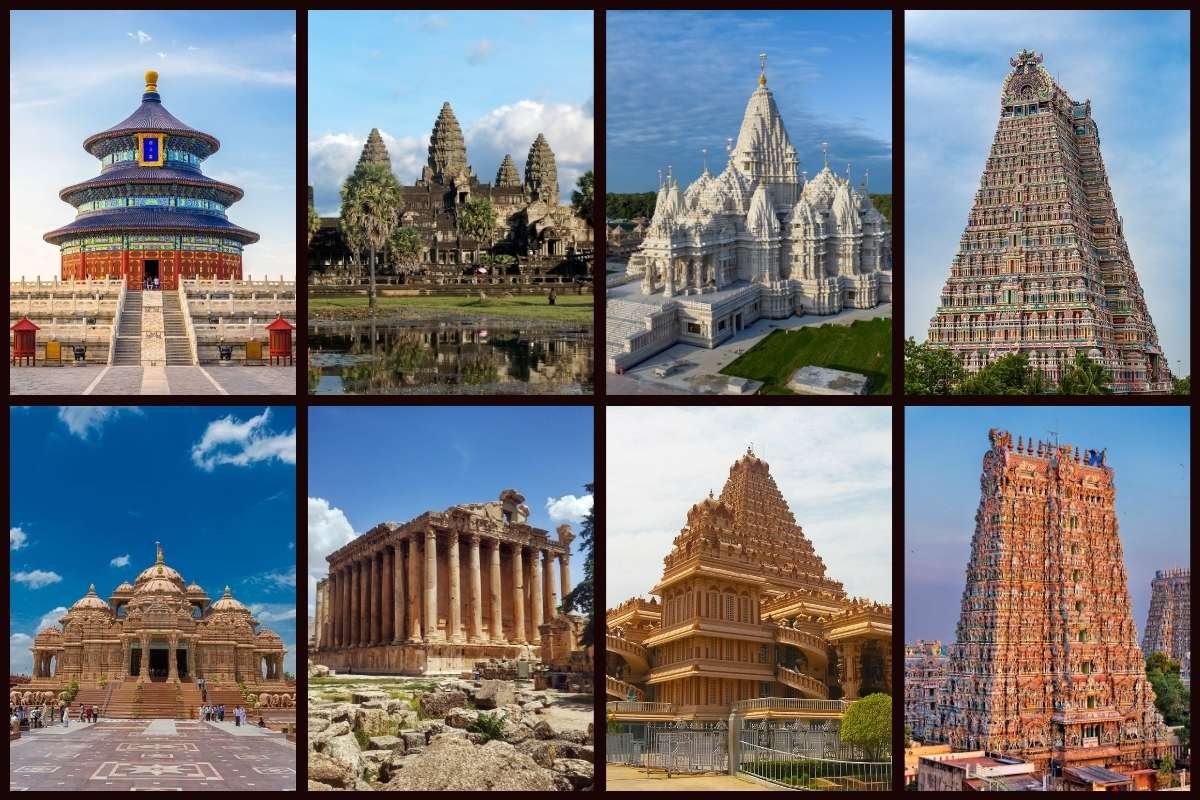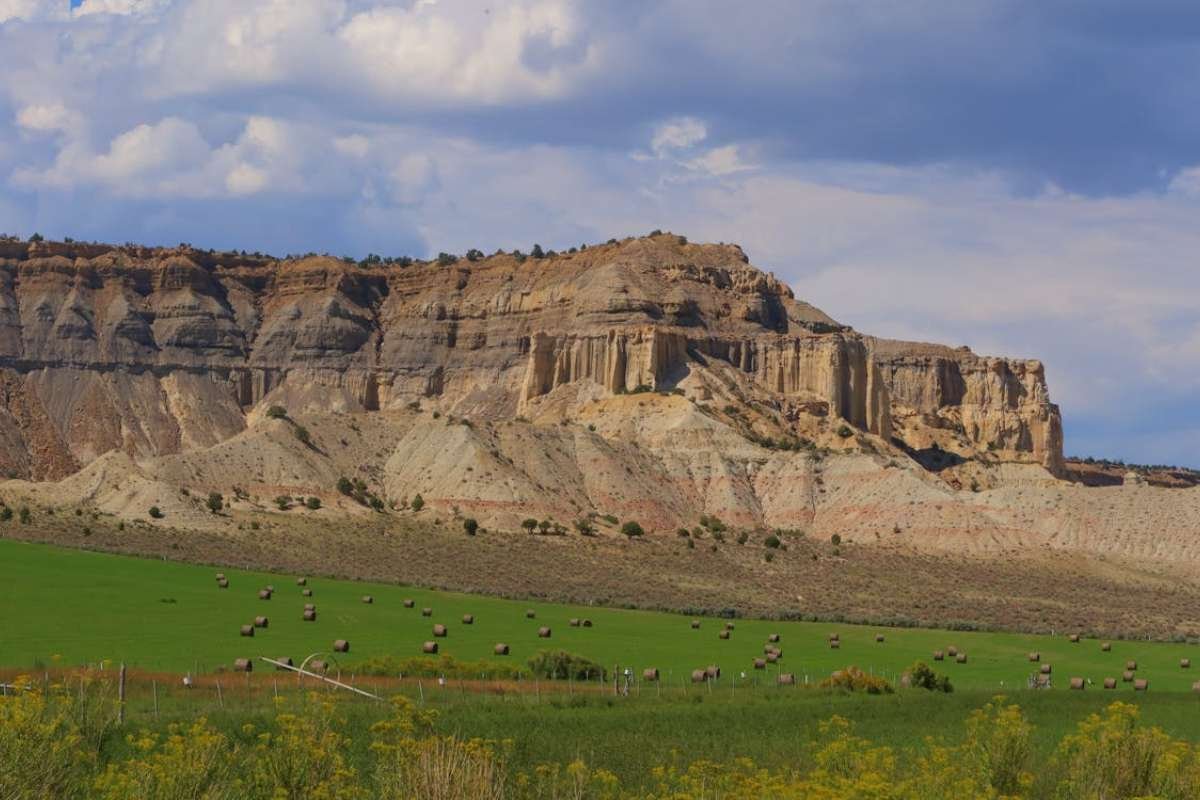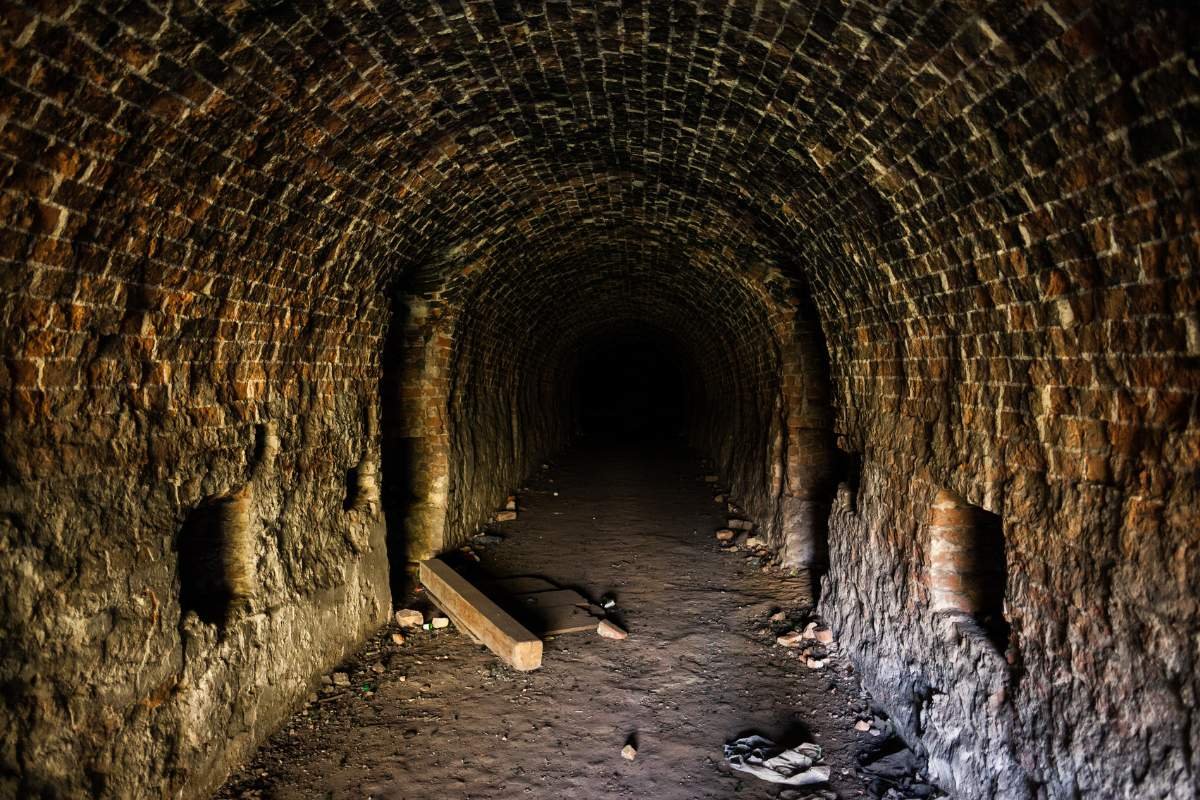Temples are huge stone buildings. They are known to be home for deities. They are not just places of worship. They also showcase the wonders of architecture that seem too fantastic. Temples are found all over the world. These places are evidence of immense devotion and immeasurable work by people. It includes carved decorative stones, spectacular spires, and a scale that seems impossible to imagine.
They’re not merely buildings. They are cities built for the divine. Some of these amazing sanctuaries are considered the largest temples in the world. Since they are seriously large and are beautiful architectural masterpieces. However, they raise just one thought-provoking question: How large can a temple complex actually be? Prepare to be surprised and deepen your understanding of sacred architecture. We reveal the largest religious monument in the world.
What Defines the Largest Temples in the World?
The largest temples in the world are typically defined through a combination of measurement criteria. They can be physical area, structural size, and visitor or worshipper capacity.
- Total Area: The land or surface area occupied by the temple complex, often measured in hectares or acres.
- Structural Size: This refers to the height, the number of towers or domes, and the total built-up area.
- Capacity: Reflects the number of worshippers or visitors that can be accommodated simultaneously, such as large pilgrimage sites or event spaces within temple compounds.
UNESCO and experts recognize these criteria. When classifying religious monuments, sometimes we prioritize total area or monumental scale
Top 15 Largest Temples in the World: Inside the Places of Worship and Wonders
The largest temples in the world are not just sanctuaries. They are monumental architectural marvels embodying centuries of culture, spirituality, and art:
1. Temple of Heaven (China)
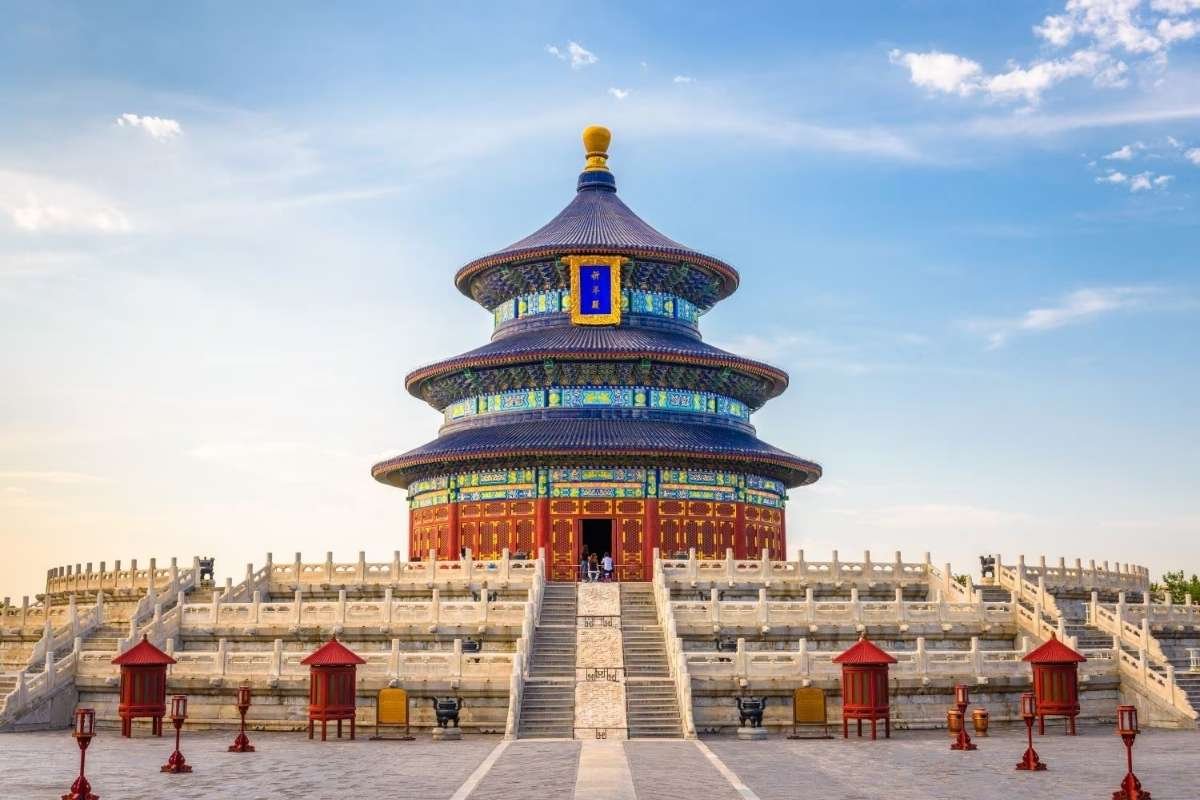
- Location and Religion/Origin: Beijing, China – Taoist
- Quick Facts: Covers 675 acres. Built in 1420 during the Ming Dynasty. Features the iconic Hall of Prayer for Good Harvests.
- Cultural/Historical Significance: UNESCO World Heritage Site. It was the ceremonial site for imperial prayers.
- Travel Tip/Fun Fact: Early morning visits reveal locals practicing tai chi in the surrounding park.
The Temple of Heaven is a magnificent UNESCO World Heritage complex in Beijing. Its circular, blue-tiled architecture and sacred grounds symbolize the harmony between heaven and earth. Emperors of the Ming and Qing dynasties visited this site to pray for abundant harvests.
2. Angkor Wat (Cambodia)
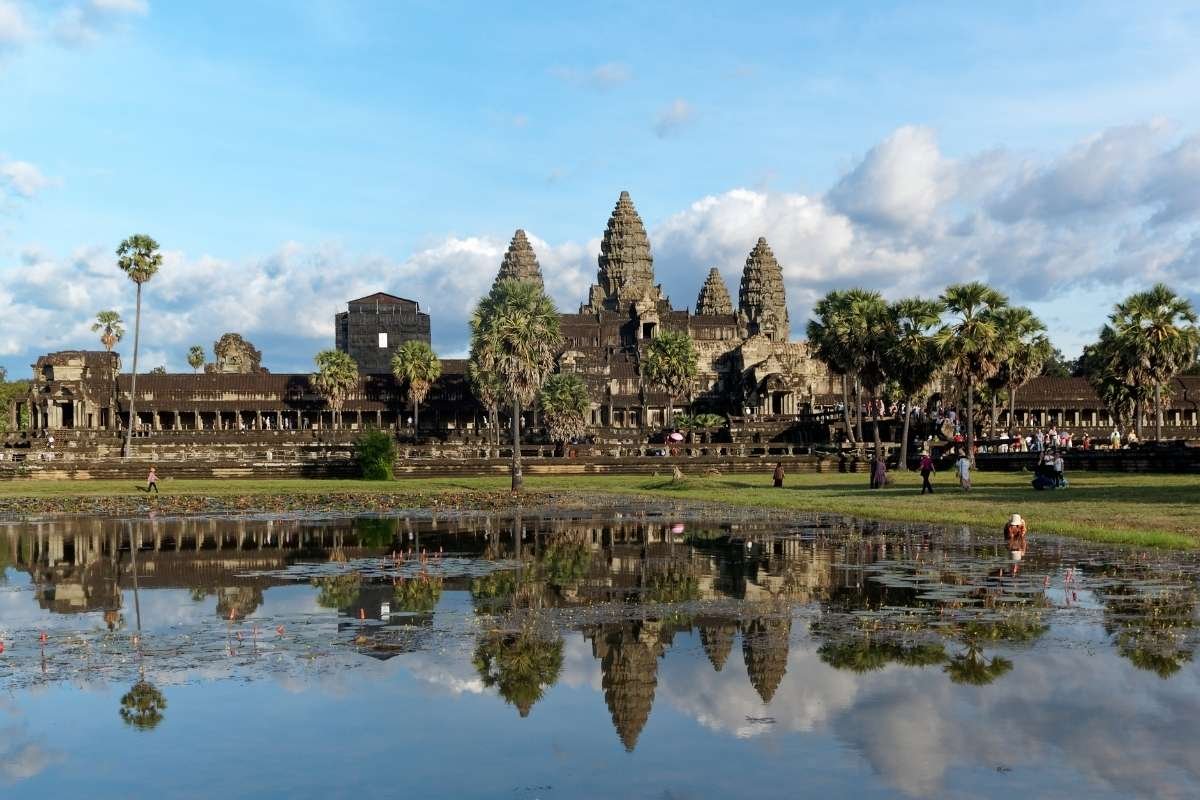
- Location and Religion/Origin: Siem Reap, Cambodia. Originally Hindu, later Buddhist
- Quick Facts: Covers 402 acres. Built in the early 12th century by King Suryavarman II. Notable for its classical Khmer architecture, extensive bas-reliefs, and towering spires.
- Cultural/Historical Significance: Symbol of Cambodia. It represents the peak of Khmer architecture. UNESCO World Heritage Site.
- Travel Tip/Fun Fact: Best visited at sunrise for breathtaking views over the central towers and reflection pools.
Angkor Wat is the largest religious monument in the world. It is an architectural marvel defined by its vast courtyards, intricate bas-reliefs, and towering spire. More than just a spiritual center, this monumental structure. This is an enduring symbol of Cambodia’s rich heritage. Millions visit annually to witness its serene grandeur.
3. Karnak Temple Complex (Egypt)
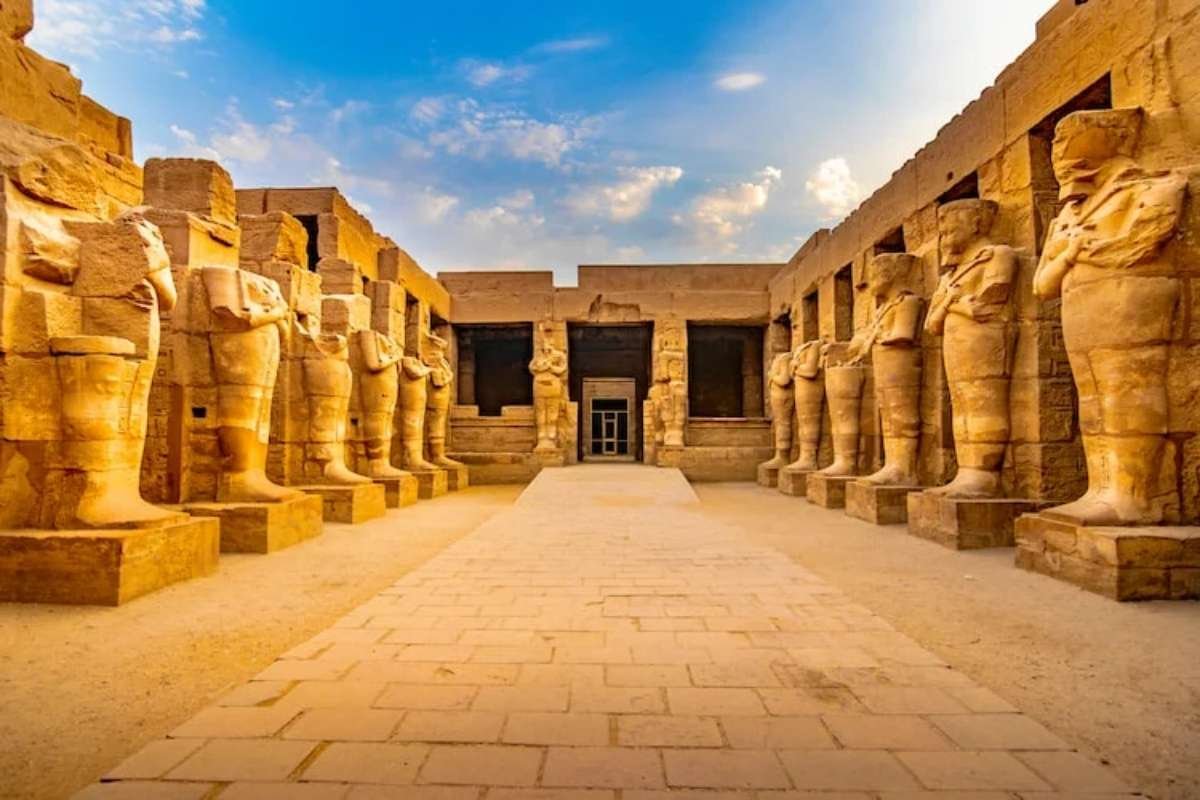
- Location and Religion/Origin: Luxor, Egypt – Ancient Egyptian religion
- Quick Facts: Covers 200 hectares; construction started in 2055 BC; famous for hypostyle halls and massive columns.
- Cultural/Historical Significance: Largest religious complex in ancient Egypt; key site for pharaonic worship.
- Travel Tip/Fun Fact: The Sound and Light show vividly brings pharaonic history to life at night.
The Karnak Temple Complex is a colossal testament to ancient Egyptian devotion. Spanning over 100 hectares with monumental columns and obelisks. This awe-inspiring site, once dedicated to Amun. It provides a staggering sense of the scale. With the spiritual significance of Egypt’s architectural achievements.
4. BAPS Swaminarayan Akshardham (New Jersey, USA)
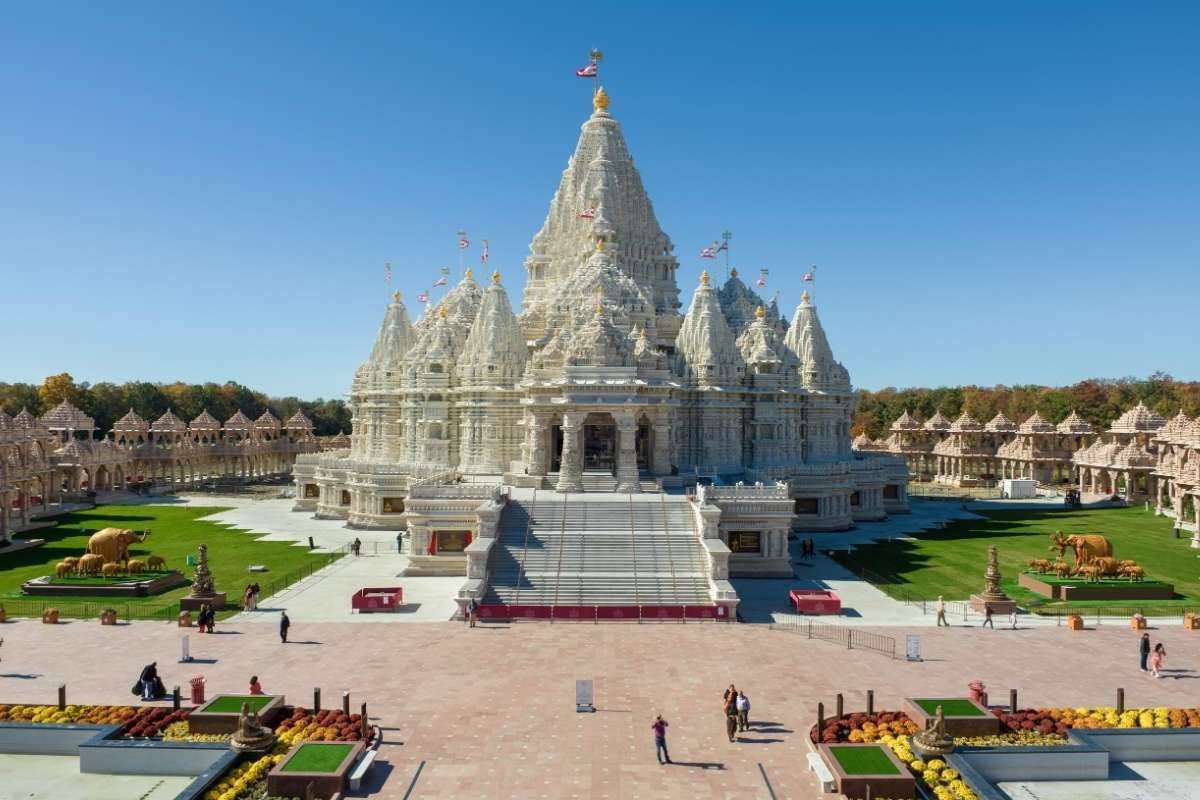
- Location and Religion/Origin: Robbinsville, New Jersey – Hindu
- Quick Facts: Covers around 183 acres. Opened in 2014. It features traditional Indian stone carvings, exhibitions, and a cultural boat ride.
- Cultural/Historical Significance: A hub of Hindu culture and spirituality in the Western world. It showcases Indian heritage.
- Travel Tip/Fun Fact: Evening light-and-water shows are a must-see experience.
The BAPS Swaminarayan Akshardham in New Jersey is a modern marvel of Hindu architecture. And a tribute to Indian craftsmanship outside of India. Built with intricately carved pillars and detailed murals. It functions as both a spiritual sanctuary and a cultural complex. The site offers a place of awe, reflection, and education for visitors from all walks of life.
5. Sri Ranganathaswamy Temple (Srirangam, Tamil Nadu, India)
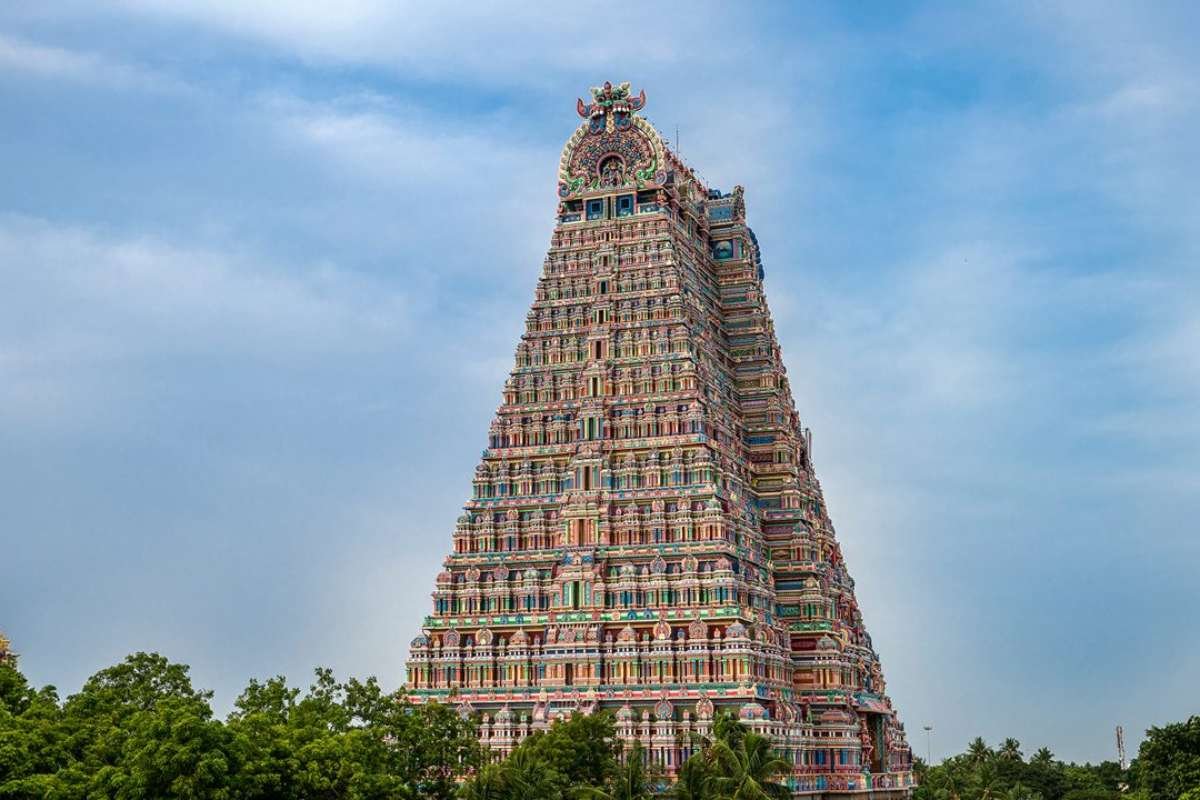
- Location and Religion/Origin: Srirangam, Tamil Nadu – Hindu (Vaishnavism)
- Quick Facts: Covers 156 acres. Originally constructed in the 9th century. It features 21 gopurams (towering gateways) and a massive temple tank.
- Cultural/Historical Significance: One of the most important Vishnu temples in India. A major pilgrimage site.
- Travel Tip/Fun Fact: Participate in the annual Vaikunta Ekadasi festival for a culturally immersive experience.
The sprawling Sri Ranganathaswamy Temple is counted among the largest temples in the world. It is an intricate city of towering, sculptured gopurams and sacred halls. It stands as a vibrant, centuries-old testament to Dravidian architecture and profound devotion.
6. Akshardham Temple (Delhi, India)
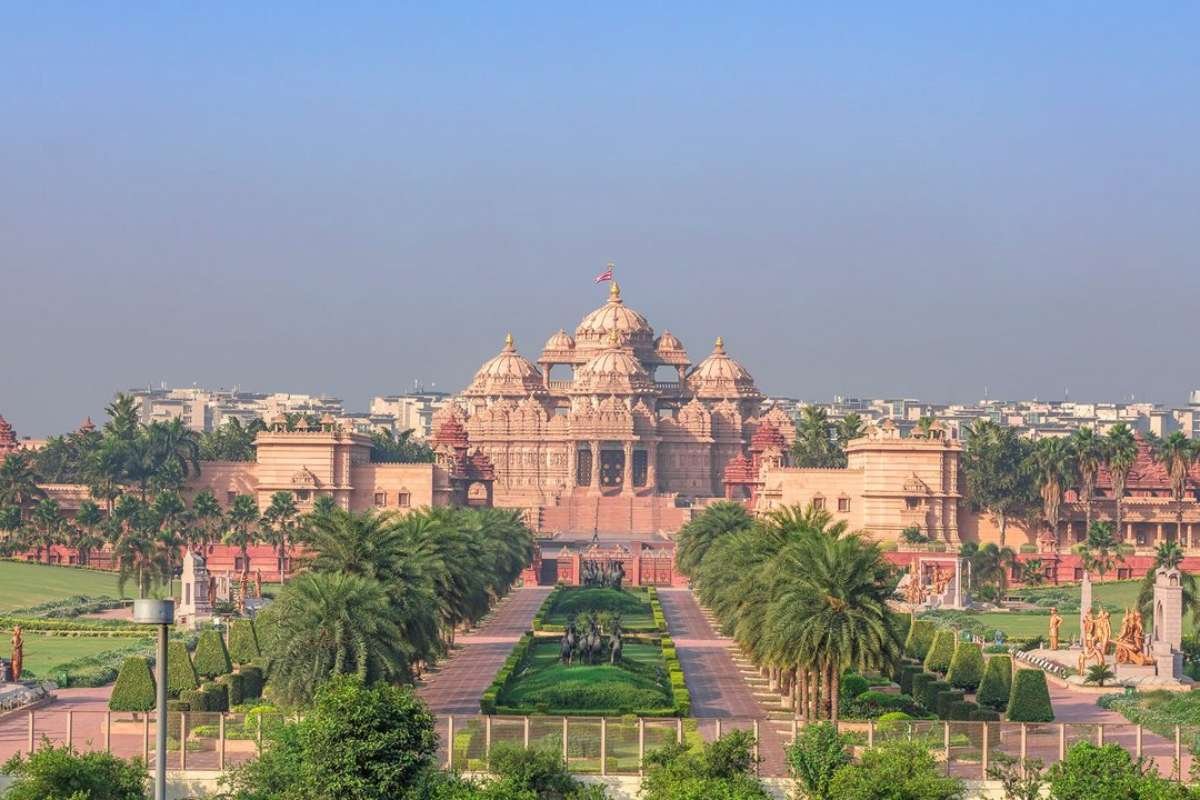
- Location and Religion/Origin: Delhi – Hindu
- Quick Facts: Covers 100 acres. Opened in 2005. It features intricately carved sandstone and marble, exhibitions. With the Yagnapurush Kund water show.
- Cultural/Historical Significance: Showcases Indian art, culture, and spirituality on a grand scale.
- Travel Tip/Fun Fact: Light and sound shows at night bring the mythological stories to life.
Akshardham, Delhi, is a monumental convergence of Indian heritage, spirituality, and art. It showcased its detailed carvings, majestic domes, and sculpted pillars. More than a temple, the complex blends devotion with education. It features exhibitions and serene gardens. It stands as an inspiring testament to centuries of Indian craftsmanship and culture.
7. Sri Lakshmi Narayani Temple (Vellore, Tamil Nadu, India)
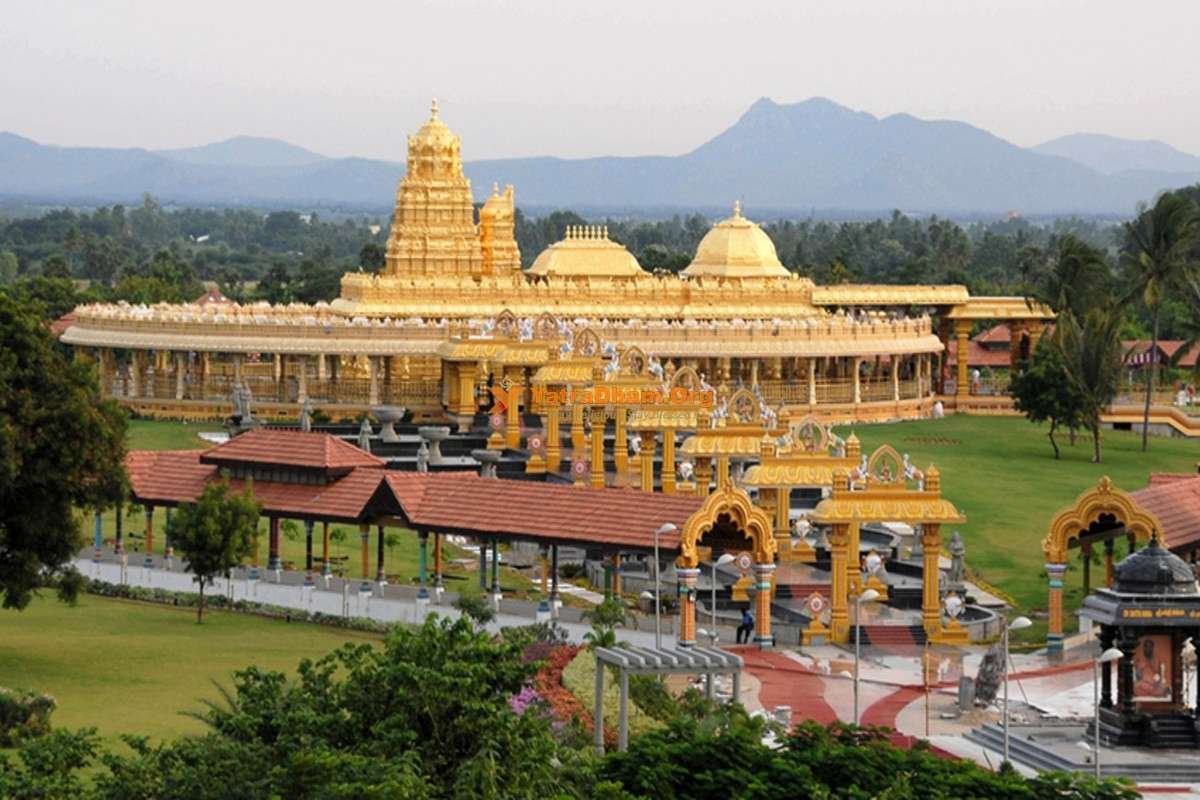
- Location and Religion/Origin: Vellore, Tamil Nadu – Hindu
- Quick Facts: Built over 100 acres. Modern construction completed in 2000; dedicated to Goddess Lakshmi Narayani.
- Cultural/Historical Significance: A modern spiritual and cultural hub attracting devotees from across India.
- Travel Tip/Fun Fact: Located near Vellore Fort, it can combine historical sightseeing with a temple visit.
The Sri Lakshmi Narayani Temple in Vellore is a modern architectural marvel. It is blending traditional design with immense scale. Its vast, beautiful complex offers a tranquil sanctuary for worship, meditation, and vibrant community gatherings. This grand, must-visit center perfectly unites devotion, art, and spirituality.
8. Baalbek (Lebanon)
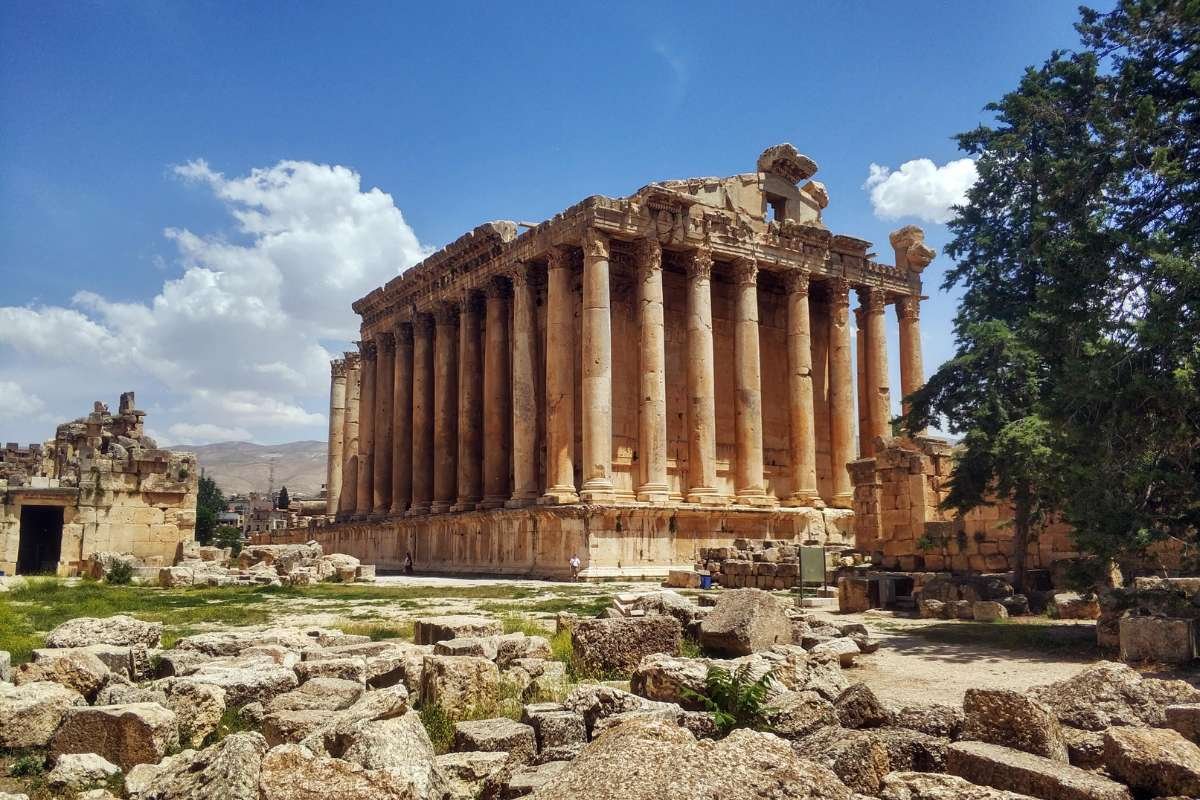
- Location and Religion/Origin: Baalbek, Lebanon – Originally Roman pagan (Jupiter, Bacchus)
- Quick Facts: Covers 99 acres; constructed around 8 BC – 60 AD; contains massive stone structures, including the Temple of Jupiter.
- Cultural/Historical Significance: Among the largest Roman temple complexes, it showcases Roman engineering and religious influence.
- Travel Tip/Fun Fact: Stone blocks weigh up to 800 tons, demonstrating ancient engineering marvels.
Baalbek stands as a monumental Roman testament to ancient engineering and devotion. It’s the colossal Temple of Jupiter and exquisitely carved stones. This showcases unmatched craftsmanship and a breathtaking scale. This remarkably preserved site continues to captivate all. Those who ponder the mysteries of its grand construction.
9. Chhatarpur Temple (Delhi, India)
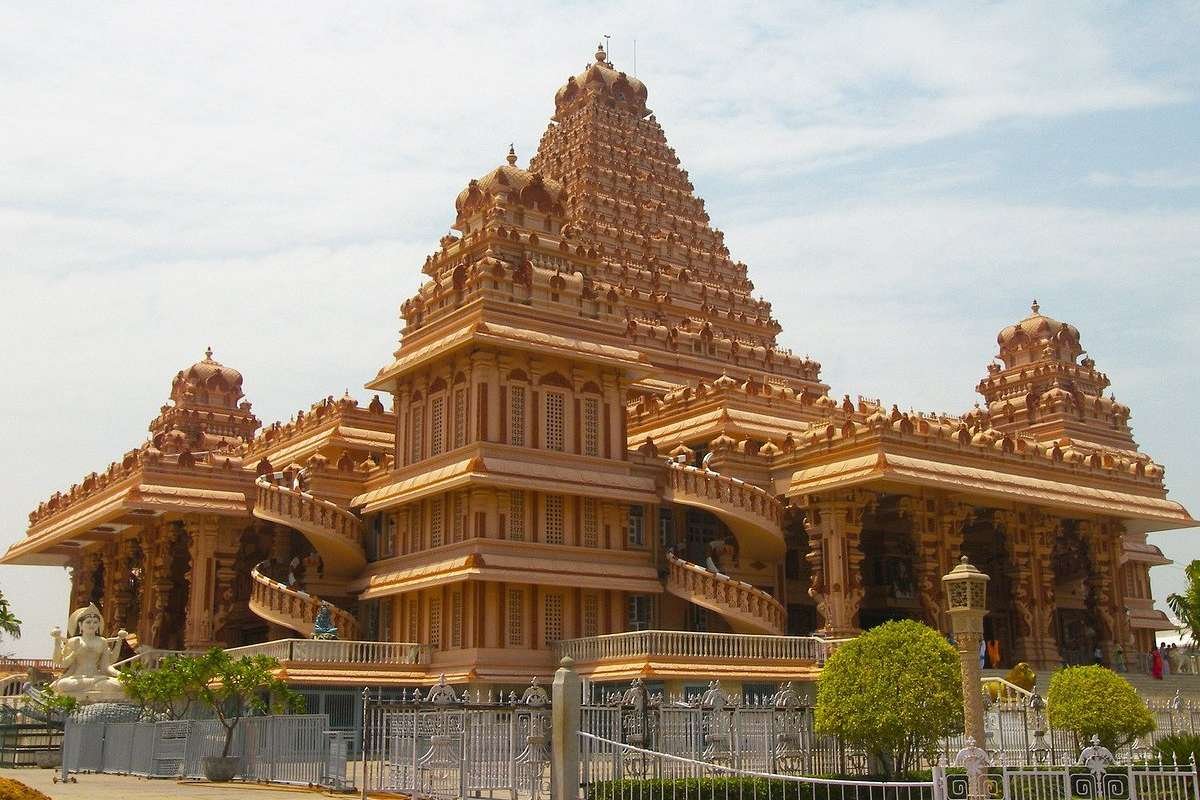
- Location and Religion/Origin: Delhi – Hindu
- Quick Facts: Spans around 70 acres. Established in 1974. Houses multiple shrines dedicated to Hindu deities.
- Cultural/Historical Significance: One of the largest temple complexes in India; it blends modern architecture with traditional styles.
- Travel Tip/Fun Fact: Weekends are crowded; early morning visits offer a peaceful experience.
Chhatarpur Temple is a vast architectural marvel in Delhi. Renowned for its magnificent scale, ornate marble pillars, and intricate carvings. More than just a spiritual haven. This is a sprawling complex. With its expansive courtyards is a major cultural landmark attracting thousands for festivals and rituals.
10. Meenakshi Amman Temple (Madurai, India)
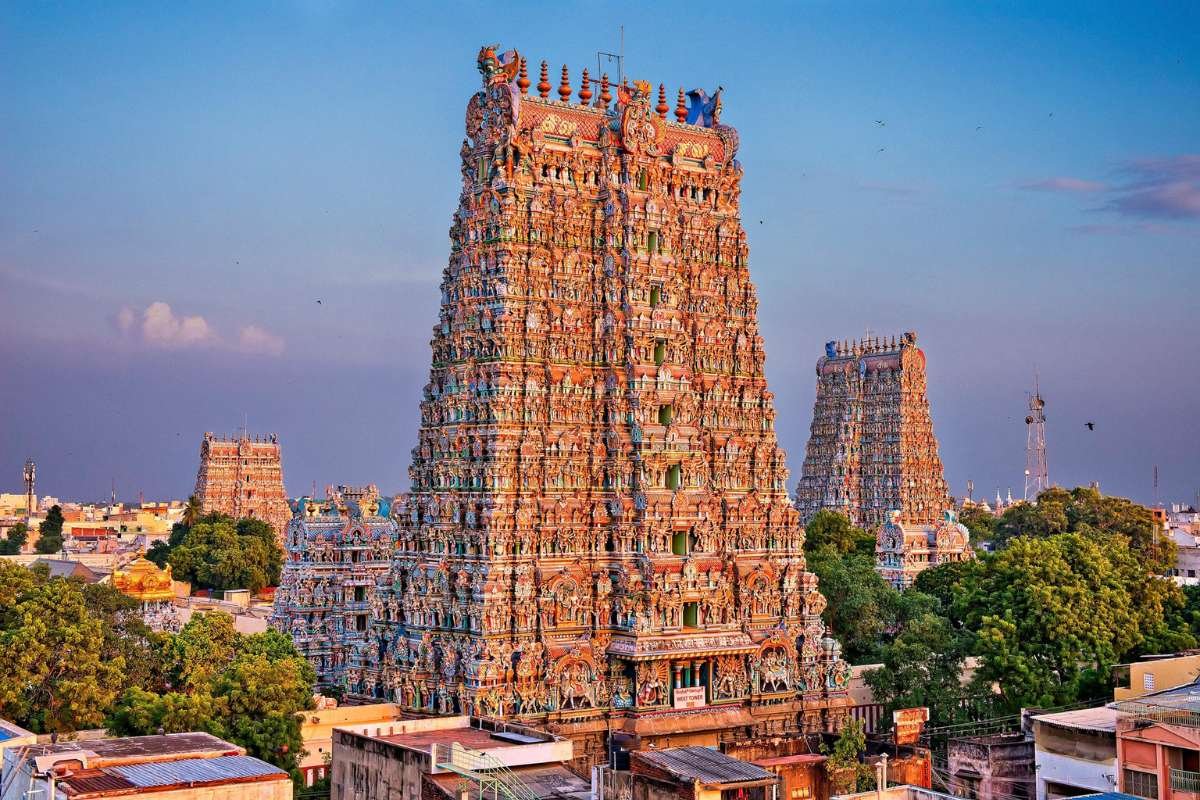
- Location and Religion/Origin: Madurai, Tamil Nadu – Hindu
- Quick Facts: Covers 45 acres. Originally built in the 6th century CE, expanded over centuries. It features 14 colorful gopurams.
- Cultural/Historical Significance: Major pilgrimage center. Showcases Dravidian temple art and devotion.
- Travel Tip/Fun Fact: Try attending the Meenakshi Tirukalyanam festival. It offers an immersive cultural experience.
The Meenakshi Amman Temple is a vibrant hub of South Indian art. Among all the largest temples in the world, it is considered a prominent one. Due to the large number of devotees visiting every year. It is instantly recognizable by its towering, colorful gopurams. Adorned with thousands of sculpted mythological figures. It stands as both an ancient spiritual sanctuary and a living testament. Offer justice to centuries of architectural devotion.
11. Brihadeeswarar Temple (Thanjavur, India)
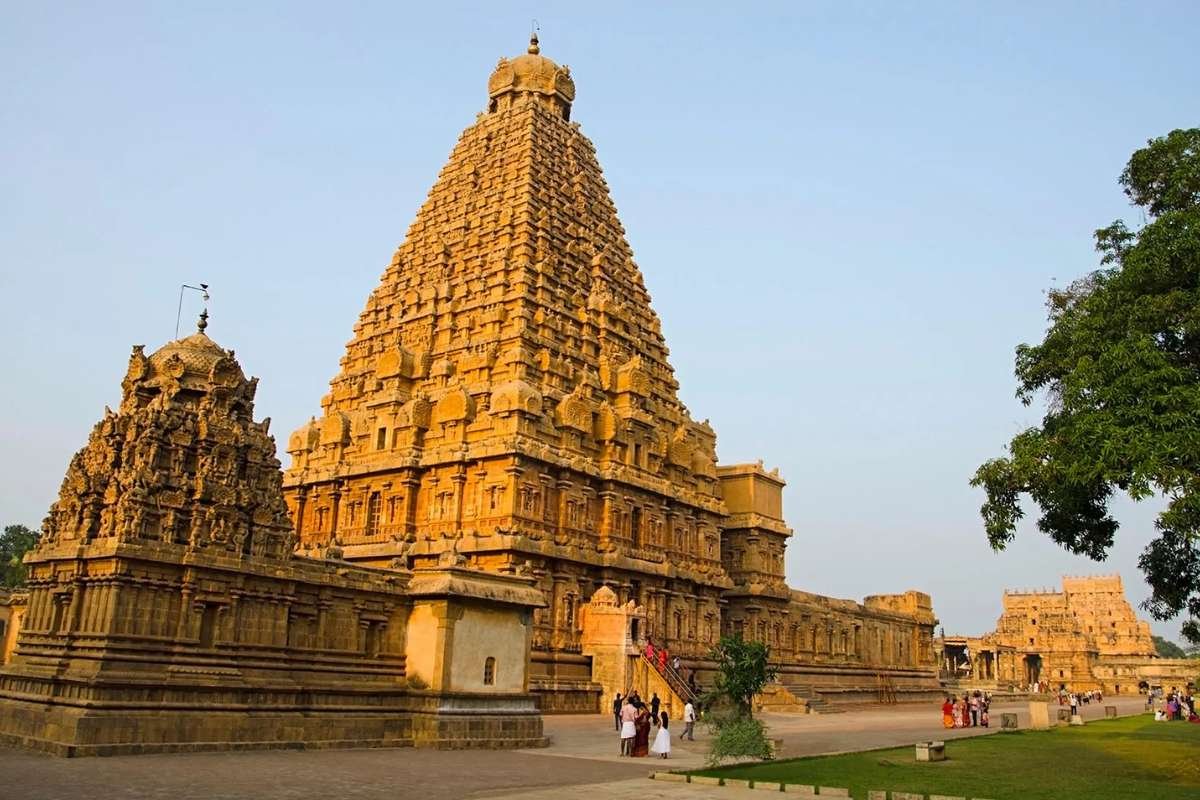
- Location and Religion/Origin: Thanjavur, Tamil Nadu – Hindu
- Quick Facts: Covers 44 acres. Built in 1010 CE by Raja Chola I. It is known for the massive 66-foot Shiva lingam.
- Cultural/Historical Significance: UNESCO World Heritage Site. Prime example of Chola architecture.
- Travel Tip/Fun Fact: The temple tower (Vimana) is one of the tallest in the world for a monolithic structure.
The Brihadeeswarar Temple is a Chola-era architectural masterpiece. It is defined by its intricate carvings. Along with massive gopurams and a towering central vimana. It’s precise proportions, detailed sculptures, and sheer scale. They reflect the zenith of South Indian design. It inspires awe in pilgrims and historians alike.
12. Prambanan Temple Compounds (Indonesia)
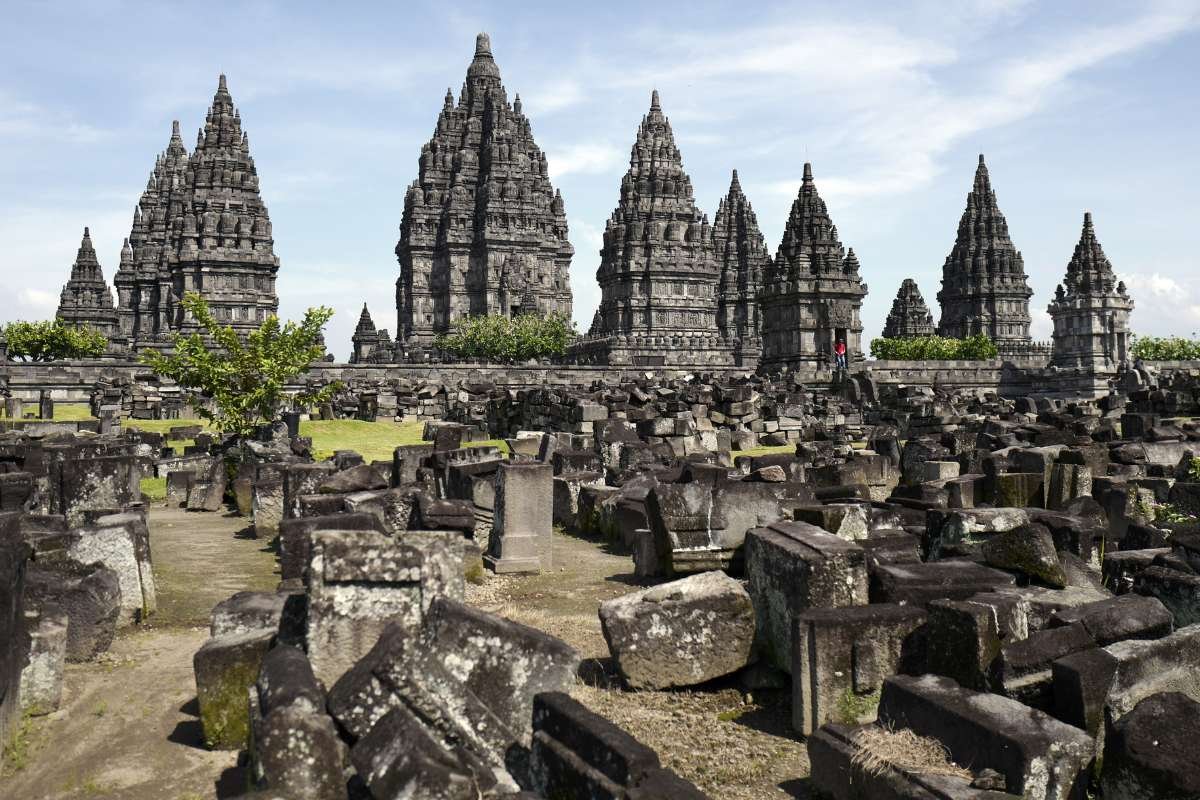
- Location and Religion/Origin: Central Java, Indonesia – Hindu
- Quick Facts: Covers 39 acres; built in the 9th century. Known for towering Shiva, Vishnu, and Brahma temples.
- Cultural/Historical Significance: UNESCO World Heritage Site. Showcases ancient Hindu architecture in Indonesia.
- Travel Tip/Fun Fact: Visit during the Ramayana Ballet performance. It is known for its cultural spectacle.
Prambanan, Indonesia’s largest Hindu temple complex. It is renowned for its vertical elegance and towering. It comprises intricately carved shrines. It stands as a majestic architectural gem. It narrates mythological tales of gods and heroes across its vast, inspiring grounds.
13. Borobudur (Indonesia)
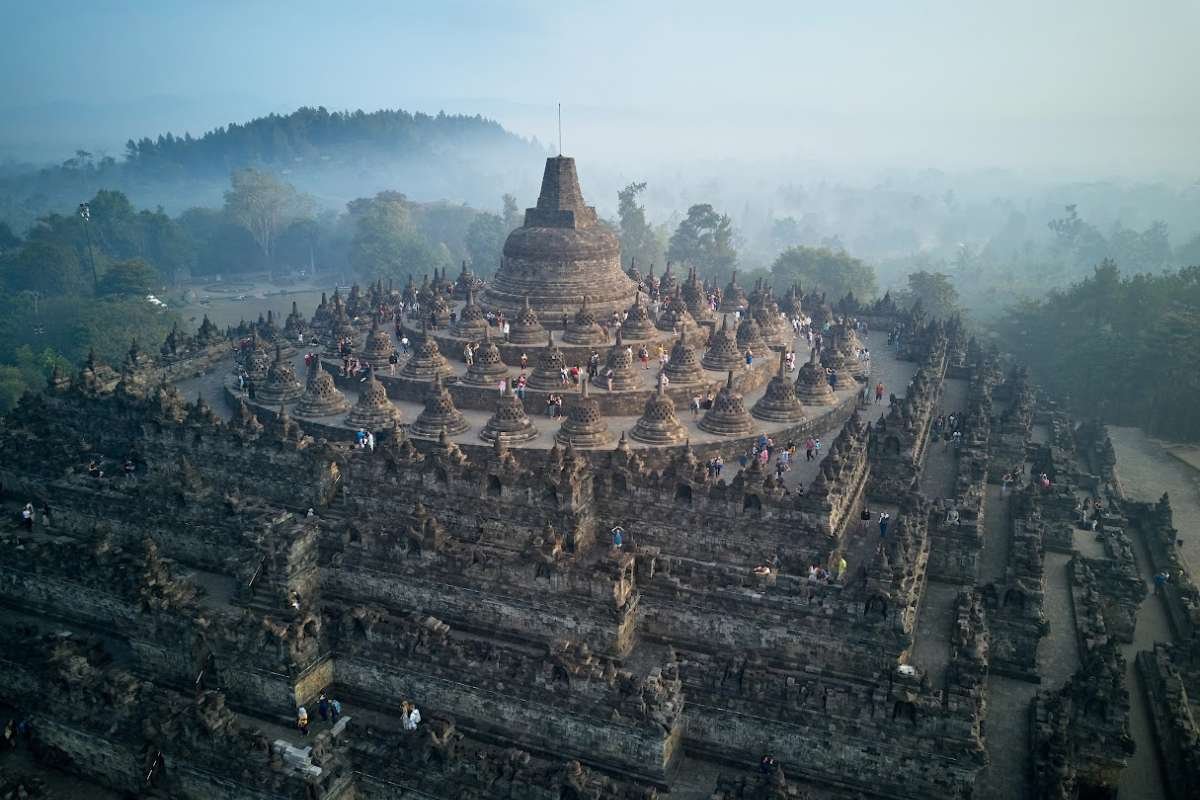
- Location and Religion/Origin: Central Java, Indonesia – Buddhist
- Quick Facts: Covers 25 acres. Built in the 9th century. Famous for 2,672 relief panels and 504 Buddha statues.
- Cultural/Historical Significance: UNESCO World Heritage Site. The largest Buddhist temple in the world.
- Travel Tip/Fun Fact: Sunrise visits offer a mystical view over volcanic landscapes and terraced temple platforms.
Borobudur, the world’s largest Buddhist monument. It is a spiritual journey carved in stone, with terraces of intricate reliefs narrating the life of Buddha. This colossal temple symbolizes the path to enlightenment. It offers both a profound pilgrimage and a breathtaking scenic wonder. Amid lush tropical landscapes.
14. Jetavanaramaya (Sri Lanka)
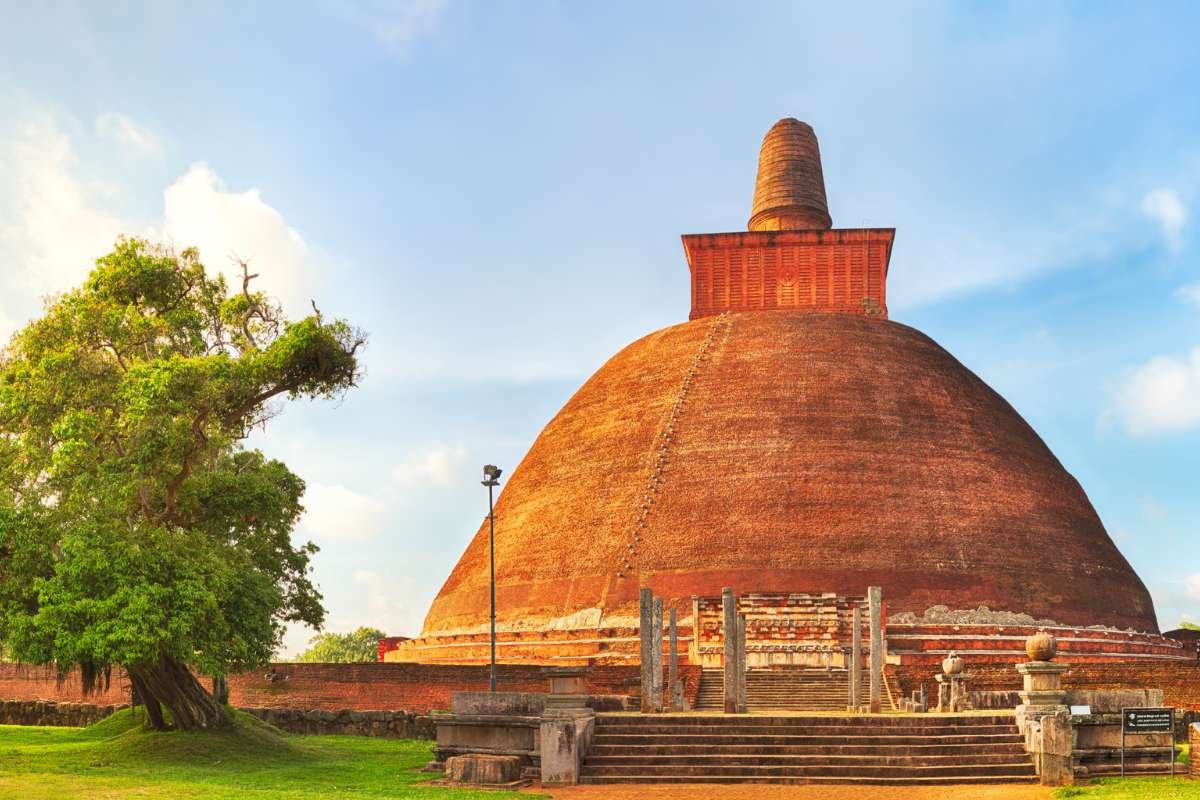
- Location and Religion/Origin: Anuradhapura, Sri Lanka – Buddhist
- Quick Facts: Covers 10 acres. Built in the 3rd century AD. Once the tallest stupa in the world.
- Cultural/Historical Significance: One of the largest brick structures globally. A sacred Buddhist site.
- Travel Tip/Fun Fact: Climb for panoramic views of Anuradhapura’s sacred city ruins.
The Jetavanaramaya Stupa in Anuradhapura, Sri Lanka. It is an ancient architectural marvel. Once the tallest stupa in the world. Its massive dome reflects both profound Buddhist devotion. It is an exceptional ancient engineering ingenuity. It stands today as a significant site of pilgrimage and a historical treasure.
15. Temple of Saint Sava (Belgrade, Serbia)
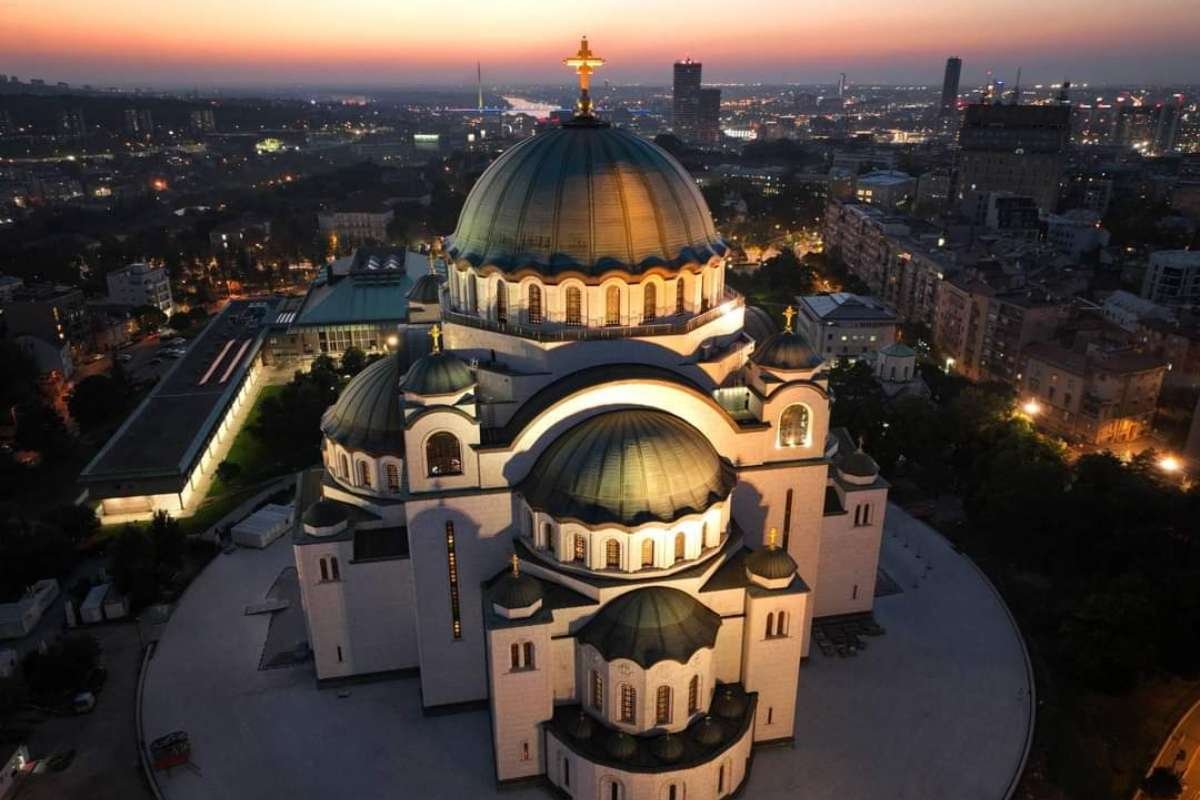
- Location and Religion/Origin: Belgrade, Serbia – Serbian Orthodox
- Quick Facts: Covers 10 acres. Construction started in 1935, completed in stages. The largest Orthodox Church in the Balkans.
- Cultural/Historical Significance: Dedicated to Saint Sava, founder of the Serbian Orthodox Church.
- Travel Tip/Fun Fact: Its massive dome can be seen from almost anywhere in Belgrade.
The Temple of Saint Sava is a monumental Orthodox cathedral and cultural landmark. With its gleaming white facade and enormous dome. They are symbolizing faith and national pride. It’s breathtaking, with richly decorated interior mosaics. It stands as a testament to centuries of Serbian religious art and devotion.
Architectural and Cultural Significance:
The largest temples in the world are not simply significant for their scale. They also embody:
- Cultural Legacy: Temples like Prambanan (Indonesia) and Borobudur (Java). They serve as hubs for the region’s spiritual and artistic traditions. They also showcase religious syncretism.
- Architectural Achievement: Many blends distinctive local styles with monumental layouts. Angkor Wat features Khmer architectural elements and symbolic cosmological planning. While Indian temples like Srirangam and Khajuraho exist. They display intricate carvings and structural innovations reflecting their eras.
- Spiritual Importance: The prominence of sites. Such as the Mahabodhi Temple (Bodh Gaya) or Sun Temple (Konârak). They are amplified by their sacred status and ongoing roles. As places for worship and pilgrimage.
Why Do these Temples Matter Today?
The largest temples in the world matter today for several key reasons. They connect their historical, cultural, spiritual, and social relevance:
1. Cultural Heritage and Identity
These temples are repositories of ancient art, architecture, and cultural narratives. They are reflecting the artistic genius of their times. With intricate carvings and colossal sculptures. As cultural landmarks, they develop collective identity and heritage continuity. With sites like Angkor Wat becoming powerful national symbols.
2. Architectural Marvels and Historical Records
Beyond faith, many temples are recognized as enduring masterpieces of engineering. With their structural grandeur inspiring modern architects. Sites like Borobudur and the Mahabodhi Temple. They are now UNESCO World Heritage sites. They are conserving invaluable insights into past civilizations. They stand as a testament to craftsmanship that has defied centuries.
3. Tourism and Economic Impact
Temples are global hubs for tourists, pilgrims, and researchers. They are generating substantial revenue and creating jobs in local economies through tourism. As centers of cultural activity, these magnificent complexes encourage surrounding markets. They also allied with businesses. Fueling regional economic growth.
4. Social and Community Roles
Temples are vital community hubs. They serve as spiritual needs. And they also develop social unity, education, and charity. They actively sustain communities by running schools, hospitals, and cultural centers. They are also embodying the core values of philanthropy and hospitality.
Conclusion:
The evolution of the spiritual cities founded for the gods. It has led to the astonishing size of buildings. They have existed for centuries. It is a remarkable journey through the Largest Temples in the World. This represents human devotion and true divine genius. From the expansive jungle enclaves of Angkor Wat. And the massive, colorful complexes of South India. These sacred places are more than stone. They are vibrant living preservation of art, culture, and history. They have earned their eternal place as global monuments.
FAQ:
1. Can tourists visit the largest temples?
Absolutely! Temples like Angkor Wat, Akshardham, and Sri Ranganathaswamy. They welcome millions of tourists each year. Visitors can explore the architecture, attend cultural performances. They can learn about the history and traditions associated with these sacred sites.
2. Are there any temples that combine multiple religions or philosophies?
Yes! Some temples, like certain Southeast Asian complexes. They incorporate both Hindu and Buddhist elements. Reflecting centuries of cultural fusion. Angkor Wat started as a Hindu temple. But later included Buddhist motifs. Symbolizing historical religious evolution.
3. Can visiting these temples provide spiritual or cultural learning experiences?
Yes. You can visit the largest temples in the world. They will allow travelers to experience centuries of spiritual practices. Along with traditional rituals and cultural storytelling. Making each visit both educational and transformative.

